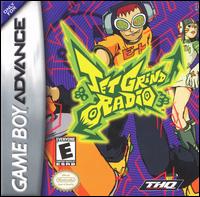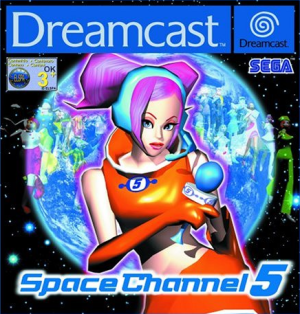
Space Channel 5 is a music video game developed by Sega AM9 and published by parent company Sega. Originally released for the Dreamcast, it was later ported to the PlayStation 2. A version for the Game Boy Advance (GBA) was published in 2003 as a Western exclusive. Following space-faring reporter Ulala as she investigates an alien invasion, players engage in rhythm-based combat where Ulala mimics the actions of rivals in time to musical tracks.

Tetris Worlds is a version of the video game Tetris. Originally released in 2001 for Microsoft Windows and Game Boy Advance, it was later released for Xbox, GameCube, and PlayStation 2 in 2002. In 2003, an Xbox Live version and a single-disc compilation version were released for the Xbox. The latter was bundled with Xbox systems.

Sonic Advance is a 2001 platform game developed by Dimps for the Game Boy Advance (GBA). It was the first Sonic the Hedgehog game released on a Nintendo console with Sonic Adventure 2: Battle on the GameCube, and was produced in commemoration of the series' tenth anniversary. The story follows Sonic, Tails, Knuckles, and Amy as they journey to stop Doctor Eggman from taking over the world. Controlling a character, players are tasked with completing each level, defeating Eggman and his robot army, and collecting the seven Chaos Emeralds.

Guilty Gear X, subtitled By Your Side in Japan, is a fighting game developed by Arc System Works and published by Sammy Studios. The second installment of the Guilty Gear series, Guilty Gear X was developed over a period of about two years after the first game's success. It was released in July 2000 for Japanese arcades, re-released on Dreamcast in December 2000, and later ported to PlayStation 2 in November 2001 and Game Boy Advance in January 2002.

Tony Hawk's Pro Skater 2 is a skateboarding video game developed by Neversoft and published by Activision. It is the second installment in the Tony Hawk's series of sports games and was released for the PlayStation in 2000, with subsequent ports to Microsoft Windows, Game Boy Color, and Dreamcast the same year. In 2001, the game was ported to the Mac OS, Game Boy Advance, Nintendo 64, and Xbox. The game was later ported to Windows Mobile and Windows Phone devices in 2006 and to iOS devices in 2010.
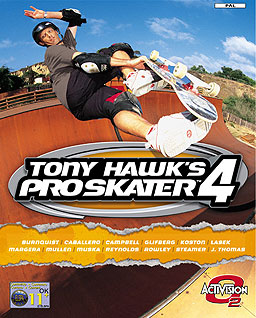
Tony Hawk's Pro Skater 4 is a 2002 skateboarding game developed by Neversoft and published by Activision under their Activision O2 label. The game was ported by different developers to various systems. It is the fourth installment in the Tony Hawk's series. The game was released in 2002 for the GameCube, PlayStation, PlayStation 2, Xbox, and Game Boy Advance. In 2003, it was published for Microsoft Windows and Mac OS X. In 2004, a Tapwave Zodiac version was released.
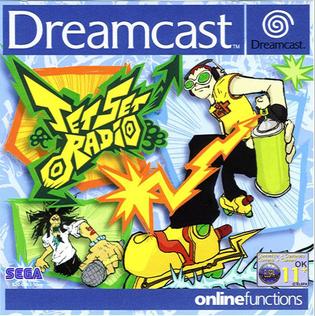
Jet Set Radio is a 2000 action game developed by Smilebit and published by Sega for the Dreamcast. The player controls a member of a youth gang, the GGs, as they use inline skates to traverse Tokyo, spraying graffiti, challenging rival gangs, and evading authorities.

Banjo-Kazooie: Grunty's Revenge is a 2003 platform game by Rare for Nintendo's Game Boy Advance (GBA). It is the third instalment in the Banjo-Kazooie series and takes place between the events of the Nintendo 64 (N64) games Banjo-Kazooie (1998) and Banjo-Tooie (2000). In Grunty's Revenge, the evil witch Gruntilda travels back in time to prevent the events of Banjo-Kazooie from happening, and the bear Banjo and his bird friend Kazooie set out to stop her. Grunty's Revenge retains the focus on collecting items and most of the other game mechanics from its predecessors, but is presented in 2D rather than 3D. Aside from the main game, players can also access minigames such as fishing and target shooting.

Sonic Advance 3 is a platform video game developed by Dimps and Sonic Team for the Game Boy Advance in 2004. It is part of the Sonic the Hedgehog series, and the sequel to Sonic Advance 2. The game stars the characters Sonic, Tails, Knuckles, Amy, and Cream as they seek to keep Doctor Eggman and his robot assistant Gemerl from building empires on each of seven chunks Eggman has divided the Earth into.
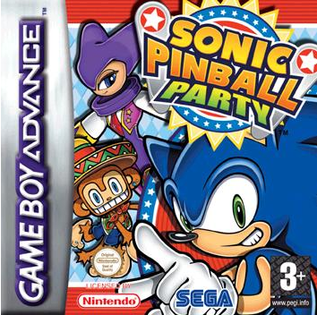
Sonic Pinball Party is a video game released for the Game Boy Advance in 2003. It is a celebration of sorts for Sonic Team featuring many references to its previous games, mostly prominently Sonic the Hedgehog, Nights into Dreams, and Samba De Amigo. There was also a release on a Twin Pack cartridge bundled with Sonic Battle and Sonic Advance respectively in 2005.

GT Advance Championship Racing, known in Japan as Advance GTA, is a racing game developed by MTO and published by THQ. It was a launch title for the Game Boy Advance. The game's sequel, GT Advance 2: Rally Racing, was released on June 30, 2002 in North America.

SpongeBob SquarePants: Revenge of the Flying Dutchman is a platform video game based on the animated series SpongeBob SquarePants, developed by Vicarious Visions and BigSky Interactive, Inc. and published by THQ for both GameCube and PlayStation 2 home video game consoles, and the only portable Game Boy Advance video game console. It was the last game to be developed by BigSky Interactive, Inc. The game was released in North America in late 2002, while in Europe it was released in early 2003. The Game Boy Advance version was also released on a Twin Pack cartridge bundled with SpongeBob SquarePants: SuperSponge in 2005.

Mat Hoffman's Pro BMX is a BMX video game endorsed by Mat Hoffman and the first game to be published by Activision under the Activision O2 label. It is similar to the Tony Hawk's series and competed directly with Acclaim Entertainment's Dave Mirra Freestyle BMX. Despite a planned release in fall of 2000, the game was released in May 2001 for the PlayStation and Game Boy Color, followed by Dreamcast, Microsoft Windows and Game Boy Advance.

Buffy the Vampire Slayer: Wrath of the Darkhul King is a 2003 platform game developed by Natsume and published by THQ. Based on the television show Buffy the Vampire Slayer, the game features Buffy Summers who fights vampires, demons, and other supernatural entities as the Slayer. The player controls Buffy through 16 side-scrolling levels that focus on solving puzzles and defeating enemies by using customizable weapons. Set in the show's fourth season, the story is about Buffy attempting to prevent a demonic warlord from returning to Earth.

Midway's Greatest Arcade Hits is an arcade game compilation released for the Nintendo 64, Dreamcast, and Game Boy Advance.

Razor Freestyle Scooter, known as Freestyle Scooter in Europe, is an extreme sports game released for the PlayStation, Game Boy Color, Dreamcast, Game Boy Advance and Nintendo 64.
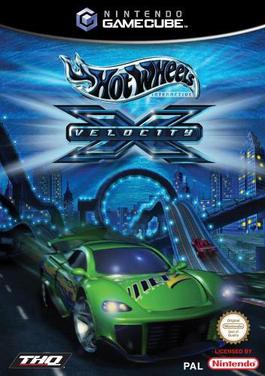
Hot Wheels: Velocity X is a vehicular combat video game released in 2002 by Beyond Games. There are versions for the GameCube, PlayStation 2, PC, and Game Boy Advance. The game is based on the Hot Wheels toy automobiles.
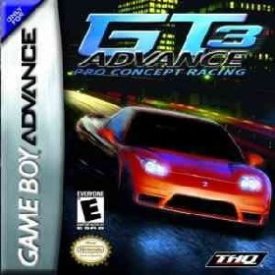
GT Advance 3: Pro Concept Racing, known in Japan as Advance GT 2, is a racing game developed by MTO and published by THQ for the Game Boy Advance. It is the sequel to GT Advance 2: Rally Racing, based heavily on the gameplay from GT Advance Championship Racing, and the third game in the GT Advance series.

Hot Wheels: Burnin' Rubber is a 2001 racing video game developed by Altron and published by THQ for the Game Boy Advance. The game is based on the Hot Wheels toy series.

MotoGP: Ultimate Racing Technology, known in the United States as simply MotoGP, is a Grand Prix motorcycle racing video game for Game Boy Advance, Xbox, Microsoft Windows, mobile phones, and N-Gage. It is based on the 2001 Grand Prix motorcycle racing season.
